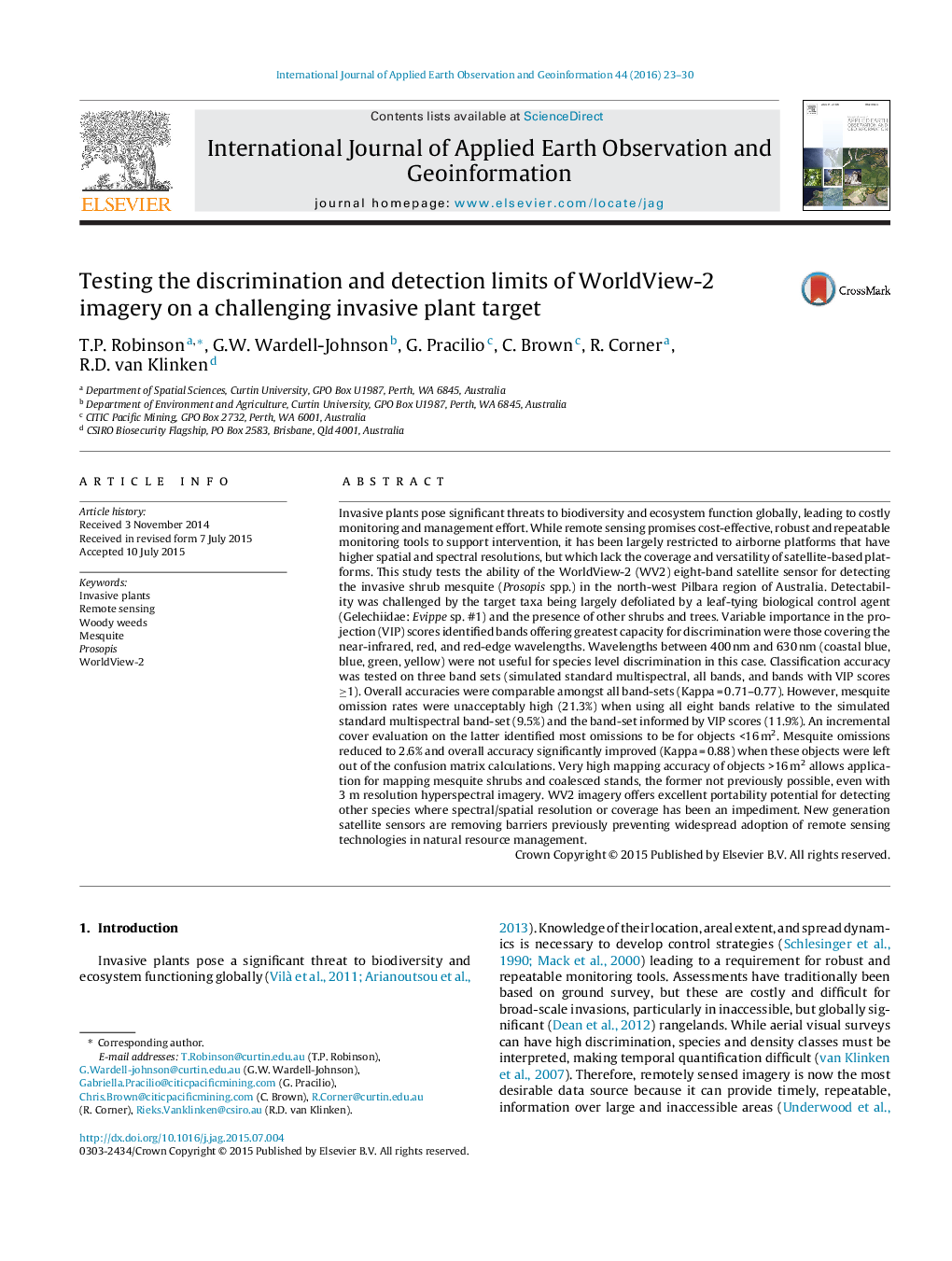| کد مقاله | کد نشریه | سال انتشار | مقاله انگلیسی | نسخه تمام متن |
|---|---|---|---|---|
| 6348536 | 1621814 | 2016 | 8 صفحه PDF | دانلود رایگان |
عنوان انگلیسی مقاله ISI
Testing the discrimination and detection limits of WorldView-2 imagery on a challenging invasive plant target
دانلود مقاله + سفارش ترجمه
دانلود مقاله ISI انگلیسی
رایگان برای ایرانیان
کلمات کلیدی
موضوعات مرتبط
مهندسی و علوم پایه
علوم زمین و سیارات
کامپیوتر در علوم زمین
پیش نمایش صفحه اول مقاله

چکیده انگلیسی
Invasive plants pose significant threats to biodiversity and ecosystem function globally, leading to costly monitoring and management effort. While remote sensing promises cost-effective, robust and repeatable monitoring tools to support intervention, it has been largely restricted to airborne platforms that have higher spatial and spectral resolutions, but which lack the coverage and versatility of satellite-based platforms. This study tests the ability of the WorldView-2 (WV2) eight-band satellite sensor for detecting the invasive shrub mesquite (Prosopis spp.) in the north-west Pilbara region of Australia. Detectability was challenged by the target taxa being largely defoliated by a leaf-tying biological control agent (Gelechiidae: Evippe sp. #1) and the presence of other shrubs and trees. Variable importance in the projection (VIP) scores identified bands offering greatest capacity for discrimination were those covering the near-infrared, red, and red-edge wavelengths. Wavelengths between 400 nm and 630 nm (coastal blue, blue, green, yellow) were not useful for species level discrimination in this case. Classification accuracy was tested on three band sets (simulated standard multispectral, all bands, and bands with VIP scores â¥1). Overall accuracies were comparable amongst all band-sets (Kappa = 0.71-0.77). However, mesquite omission rates were unacceptably high (21.3%) when using all eight bands relative to the simulated standard multispectral band-set (9.5%) and the band-set informed by VIP scores (11.9%). An incremental cover evaluation on the latter identified most omissions to be for objects <16 m2. Mesquite omissions reduced to 2.6% and overall accuracy significantly improved (Kappa = 0.88) when these objects were left out of the confusion matrix calculations. Very high mapping accuracy of objects >16 m2 allows application for mapping mesquite shrubs and coalesced stands, the former not previously possible, even with 3 m resolution hyperspectral imagery. WV2 imagery offers excellent portability potential for detecting other species where spectral/spatial resolution or coverage has been an impediment. New generation satellite sensors are removing barriers previously preventing widespread adoption of remote sensing technologies in natural resource management.
ناشر
Database: Elsevier - ScienceDirect (ساینس دایرکت)
Journal: International Journal of Applied Earth Observation and Geoinformation - Volume 44, February 2016, Pages 23-30
Journal: International Journal of Applied Earth Observation and Geoinformation - Volume 44, February 2016, Pages 23-30
نویسندگان
T.P. Robinson, G.W. Wardell-Johnson, G. Pracilio, C. Brown, R. Corner, R.D. van Klinken,